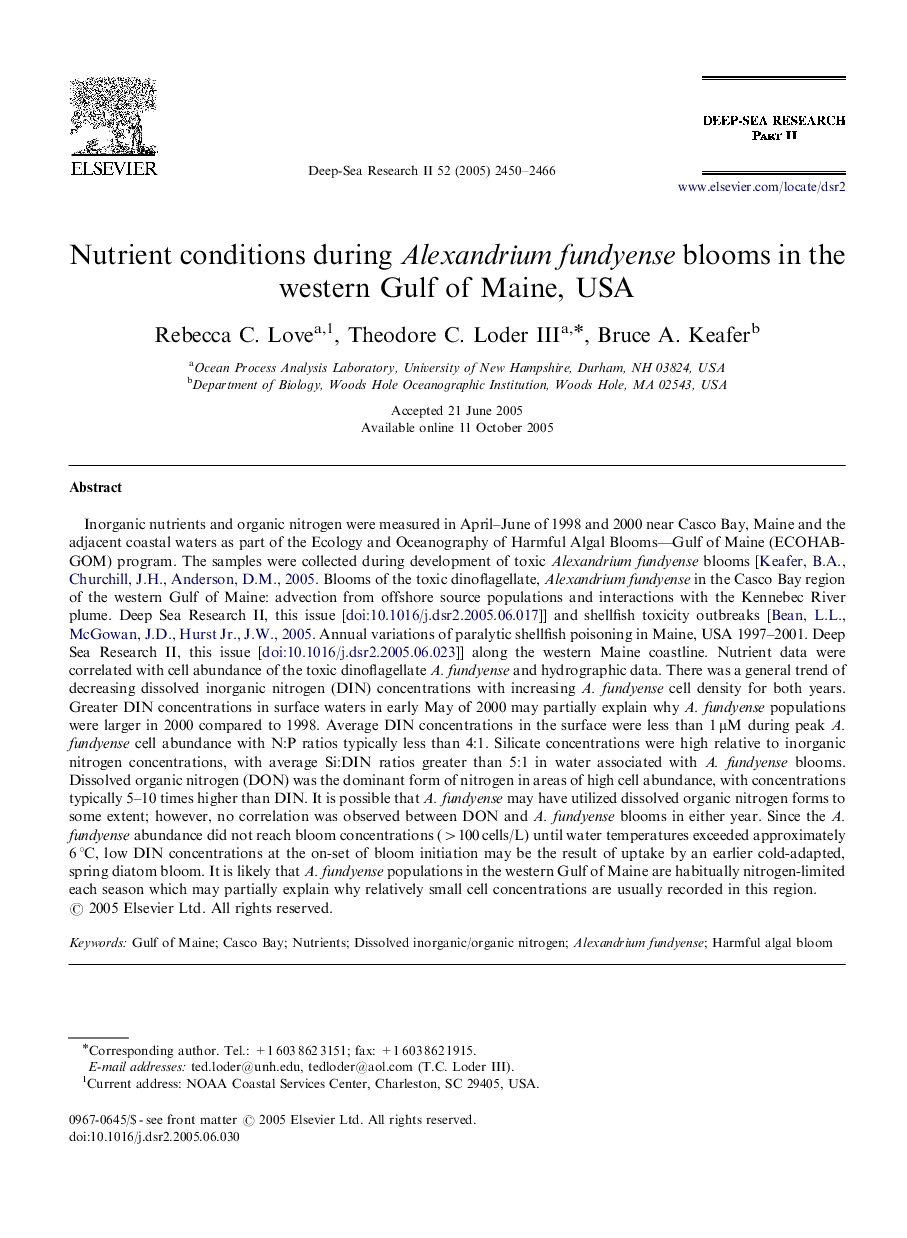| کد مقاله | کد نشریه | سال انتشار | مقاله انگلیسی | نسخه تمام متن |
|---|---|---|---|---|
| 4538577 | 1626522 | 2005 | 17 صفحه PDF | دانلود رایگان |

Inorganic nutrients and organic nitrogen were measured in April–June of 1998 and 2000 near Casco Bay, Maine and the adjacent coastal waters as part of the Ecology and Oceanography of Harmful Algal Blooms—Gulf of Maine (ECOHAB-GOM) program. The samples were collected during development of toxic Alexandrium fundyense blooms [ Keafer, B.A., Churchill, J.H., Anderson, D.M., 2005. Blooms of the toxic dinoflagellate, Alexandrium fundyense in the Casco Bay region of the western Gulf of Maine: advection from offshore source populations and interactions with the Kennebec River plume. Deep Sea Research II, this issue [doi:10.1016/j.dsr2.2005.06.017]] and shellfish toxicity outbreaks [Bean, L.L., McGowan, J.D., Hurst Jr., J.W., 2005. Annual variations of paralytic shellfish poisoning in Maine, USA 1997–2001. Deep Sea Research II, this issue [doi:10.1016/j.dsr2.2005.06.023]] along the western Maine coastline. Nutrient data were correlated with cell abundance of the toxic dinoflagellate A. fundyense and hydrographic data. There was a general trend of decreasing dissolved inorganic nitrogen (DIN) concentrations with increasing A. fundyense cell density for both years. Greater DIN concentrations in surface waters in early May of 2000 may partially explain why A. fundyense populations were larger in 2000 compared to 1998. Average DIN concentrations in the surface were less than 1 μM during peak A. fundyense cell abundance with N:P ratios typically less than 4:1. Silicate concentrations were high relative to inorganic nitrogen concentrations, with average Si:DIN ratios greater than 5:1 in water associated with A. fundyense blooms. Dissolved organic nitrogen (DON) was the dominant form of nitrogen in areas of high cell abundance, with concentrations typically 5–10 times higher than DIN. It is possible that A. fundyense may have utilized dissolved organic nitrogen forms to some extent; however, no correlation was observed between DON and A. fundyense blooms in either year. Since the A. fundyense abundance did not reach bloom concentrations (>100 cells/L) until water temperatures exceeded approximately 6 °C, low DIN concentrations at the on-set of bloom initiation may be the result of uptake by an earlier cold-adapted, spring diatom bloom. It is likely that A. fundyense populations in the western Gulf of Maine are habitually nitrogen-limited each season which may partially explain why relatively small cell concentrations are usually recorded in this region.
Journal: Deep Sea Research Part II: Topical Studies in Oceanography - Volume 52, Issues 19–21, September–October 2005, Pages 2450–2466